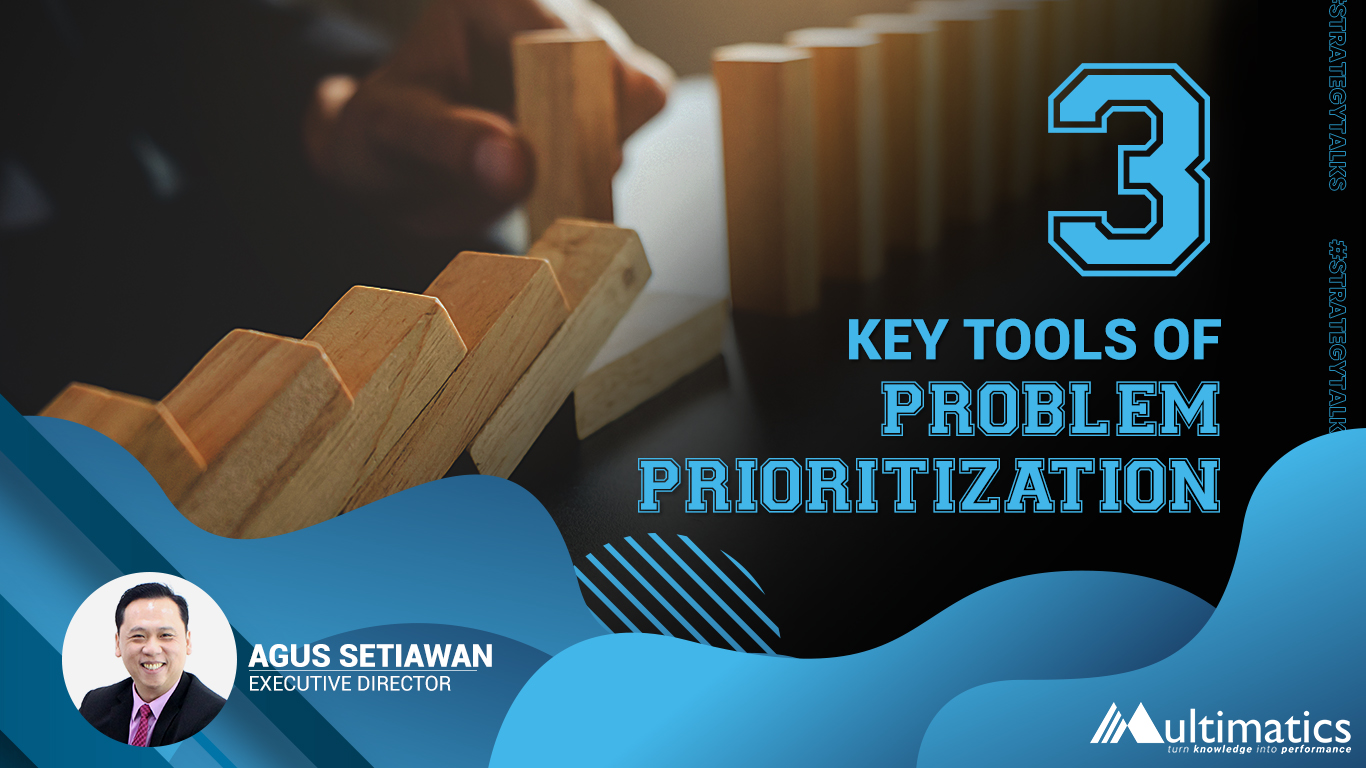

Dr. Agus Setiawan
PhD Holder and result-oriented Director with 25 years experience with involvement in all levels of Business Strategy, Sales and Marketing, Managing Project and Product Development. Aside of managing a company, he is also the best corporate trainer and public speaker in seminar and conference.
3 Key Tools of Problem Prioritization
Tuesday, 02 March 2021
Problem prioritization helps you answer the problem by providing you with a formal method for evaluating the necessity of completing each task on your list. The process of prioritizing lets you make informed decisions about what you need to do, what you don't need to do, and when you need to focus on certain tasks. Therefore, these are 3 key tools of problem prioritization as described as follows.
Pareto Chart
The Pareto Chart is a quality management tool that can be applied in your corporate daily routine or in your personal life. The entire system is based on the idea that little things can create big consequences. Thus, the methodology consists of identifying situations that create more problems and prioritize them during the intervention strategies. The Pareto Principle represents this inequality, and today managers use it to identify the most important root causes, tasks, or problems (think of these as 20% causes) that can be addressed and have a disproportionately large impact (an 80% result).
X-Y Matrix
X-Y matrix project management tool (or cause and effect matrix) is used mainly in six sigma DMAIC project. This is the ideal tool for prioritizing the input process parameters (X’s). The prioritization of X’s is important for performing process FMEA. The XY Matrix table illustrates the correlation of process inputs to customer’s outputs. The table is illustrated using a group of columns and rows, with factor X (input) represented by the horizontal axis and factor Y (output) represented by the vertical axis.
FMEA
Failure Mode and Effects Analysis (FMEA) is a structured tool to discovering potential failures that may exist within the design of a product or process. Failure modes are the ways in which a process can fail. Effects are the ways that these failures can lead to waste, defects or harmful outcomes for the customer. Failure Mode and Effects Analysis is designed to identify, prioritize and limit these failure modes. FMEA is not a substitute for good engineering. Rather, it enhances good engineering by applying the knowledge and experience of a Cross Functional Team (CFT) to review the design progress of a product or process by assessing its risk of failure.
Conclusion
To summarize, by knowing those following tools of problem prioritization above, it will be beneficial to employee because it can help them efficiently solve problem by prioritizing each of them, in which can lead towards business growth and advancement.
Reference:
Editorial Team (Accessed on November 25, 2020). Six Sigma and the X-Y Matrix of Project Management. Bright Hub PM blog. https://www.brighthubpm.com/six-sigma/42068-six-sigma-x-y-matrix-explained/
Editorial Team (Accessed on November 25, 2020). Failure Mode and Effects Analysis (FMEA). Quality One International blog. https://quality-one.com/fmea/
Editorial Team (Accessed on November 25, 2020). Learn how to prioritize your problems with the Pareto Chart. Hotmart blog. https://blog.hotmart.com/en/pareto-chart/